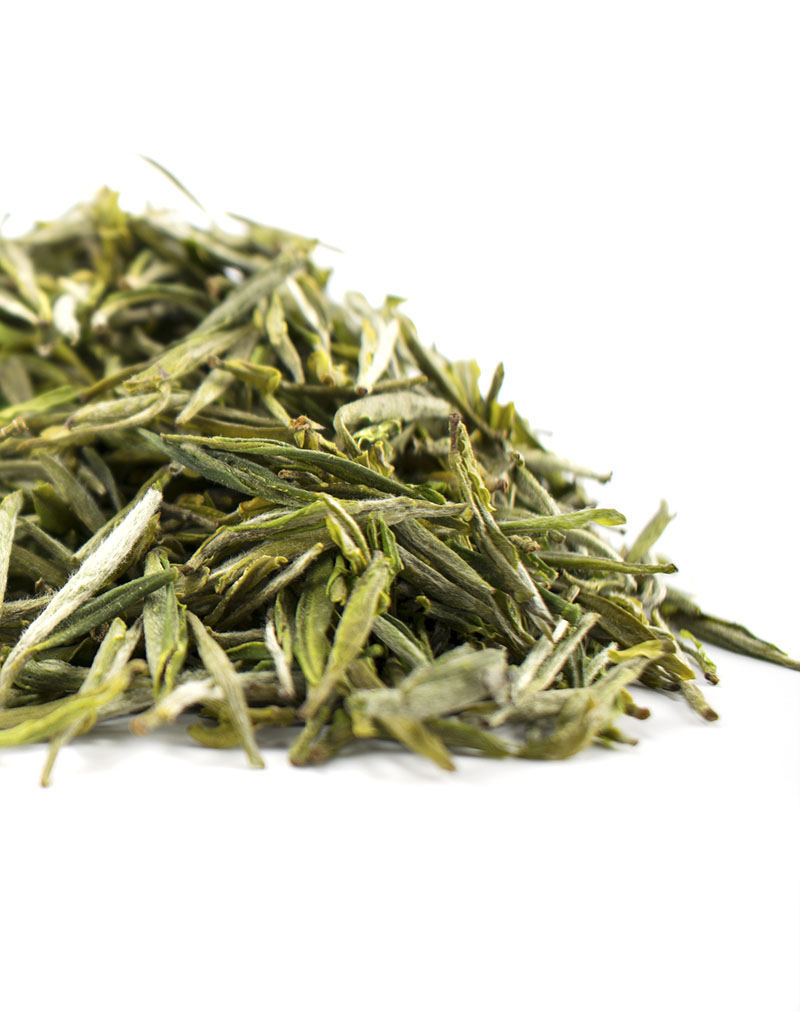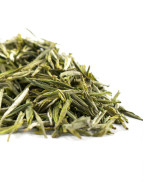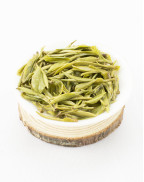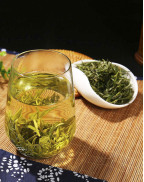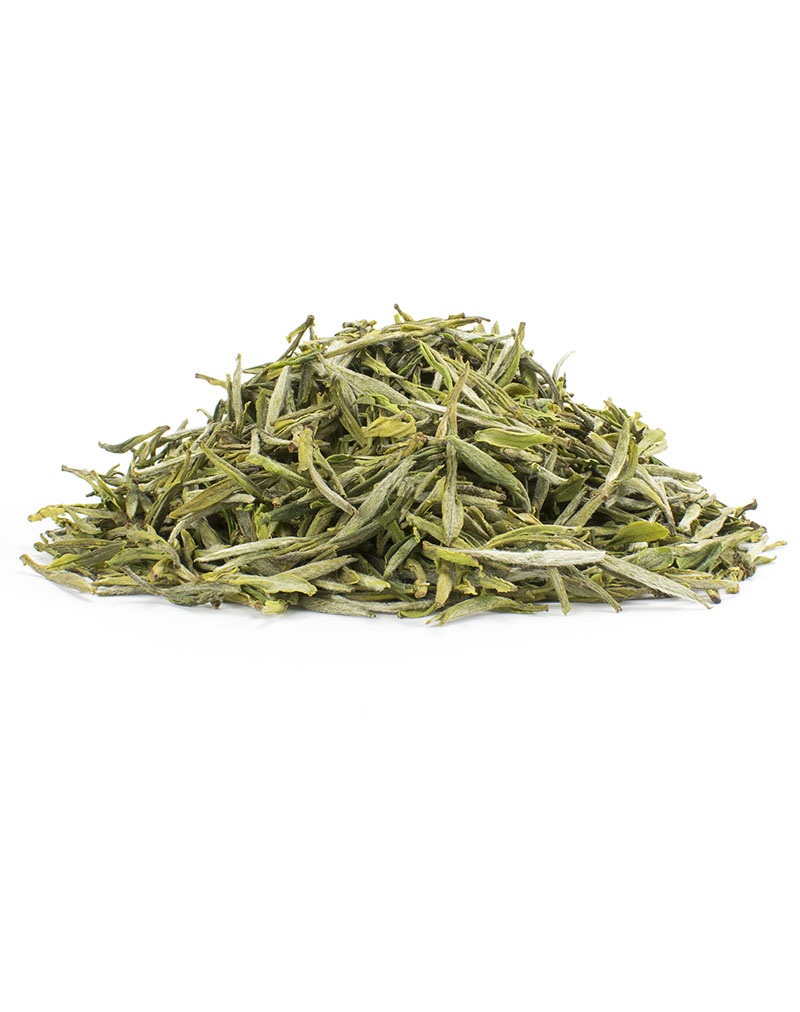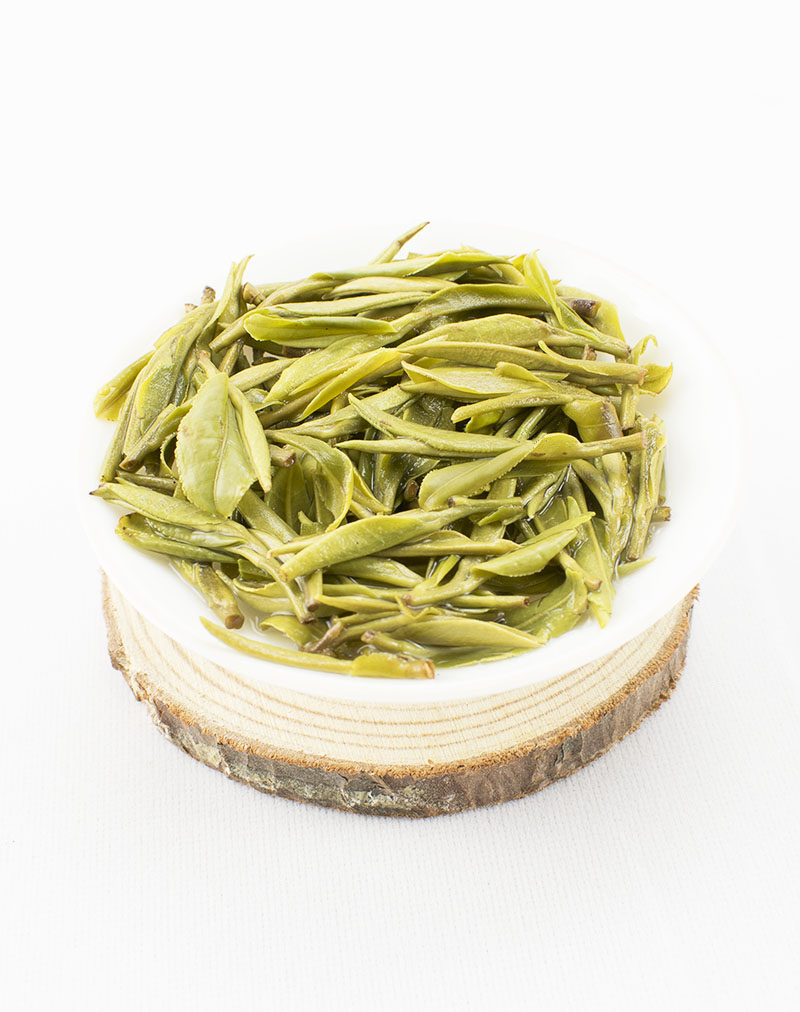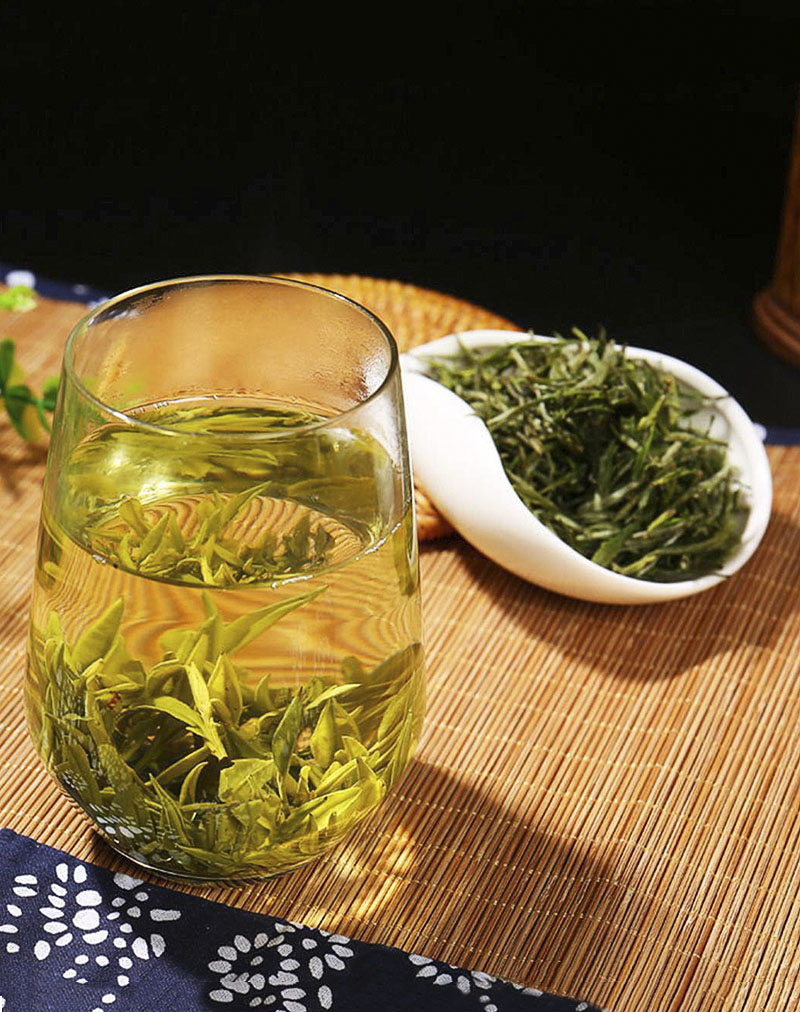Huo Shan Huang Ya Yellow Tea
- Product Code: simple
- Availability: In Stock
Basic Info
Name: Huo Shan Ya Yellow Tea
Other Names: Huo Shan Yellow Bud Tea
Category: Yellow Tea
Origin: Huoshan County, Anhui Province
Taste & Aroma: Clear fragrance, rich, mellow, and sweet taste,lingering sweetness
Liquor: Yellow-green, clear, and bright
Dry Leaf: Evenly sized, fine and tender buds with downy hairs
Harvest Period: April 6,2024
Altitude: 1200M above sea
Fermentation: Light
Season: Spring tea
Item Form: Loose leaves
Ingredients: 100% hand-picked natural tea buds and leaves
Tea Maker: Gujun
Shelf Life: 10 months at room temperature / 18 months with low temperature storage
Storage: Stored in cool, airtight, opaque containers - refrigeration is recommended
Flavor: Unflavored
Caffeine: Low
Huo Shan Huang Ya Yellow Tea
Discover the allure of Huo Shan Huang Ya tea, a precious treasure from the heart of China's tea culture. This exquisite tea, with its rich history dating back to the Han Dynasty, offers a unique and delightful tea experience. Immerse yourself in its delicate aroma, a harmonious blend of fresh flowers, fruits, and the hint of pine, while savoring its mild and mellow taste that lingers on your palate. The tea's fine, downy leaves and vibrant yellow-green color create a visual delight. While Huo Shan Huang Ya incorporates elements of traditional yellow tea production, its lighter degree of yellowing leans it closer to the qualities of green tea. Grown in the mountainous splendor of Huo Shan County, this tea benefits from a unique natural environment, ensuring exceptional quality. Delight in a cup of Huo Shan Huang Ya tea, where tradition, history, and nature converge to create an unparalleled tea experience.
Basic Information
Yellow tea is one of the six traditional tea categories in China, but it is less common in the market compared to other teas, making it relatively niche and unfamiliar to many. Despite sharing a similar production process with green tea, yellow tea distinguishes itself with a distinct flavor profile, especially in terms of aroma. Today, let's step into the world of yellow tea and explore the wonders of Huo Shan Yellow Bud tea.
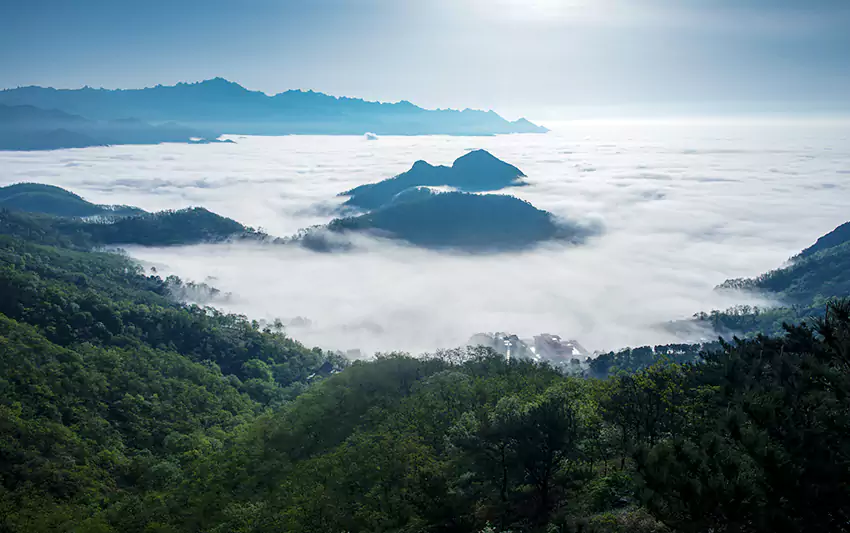
Huoshan County, Anhui Province
Show Full Description
Huo Shan Yellow Bud tea, also known as Huo Shan Huang Ya (Huo Shan Yellow Bud 霍山黃芽) or Yellow Bud tea, is a rare variety of Chinese tea originating from Huo Shan County in Anhui Province. It stands out in the world of tea with its rich aroma, mild taste, and unique appearance. Its history, production process, and characteristics have made it a treasure in the tea world. With a history dating back to the Han Dynasty, it was mentioned in "Records of the Grand Historian." It was even a tribute tea from the Tang Dynasty to the Qing Dynasty, highlighting its historical significance.
The quality and taste of Huo Shan Huang Ya tea have received high recognition and praise in the world of tea. It has won numerous domestic and international awards in tea competitions. Additionally, it's favored by consumers for its cultural value and historical heritage. Whether enjoyed as a daily beverage or given as a gift, Huo Shan Huang Ya tea offers a unique tea experience.
Historical Anecdotes
Huo Shan Huang Ya is historically the first tea in Anhui, with early references found in the writings of Sima Qian in the Western Han period, stating, "There are yellow buds on the mountains of Shouchun, which can be brewed and consumed, bringing longevity." In the Tang Dynasty, Lu Yu's "Classic of Tea" and Li Zhao's "Supplement to the Tang State History" listed Huo Shan Huang Ya as one of the 14 tribute teas, praising its qualities. The "Compendium of Fragrant Plants" from the Ming Dynasty also hailed it as a top-quality tea.
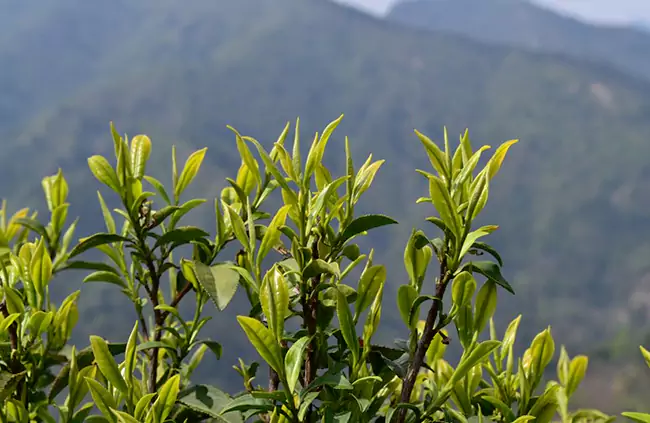
The Tender Buds Of Huoshan Huangya Tea Tree
Legend has it that Princess Yuzhen, Emperor Taizong's sister, became a nun and resided in a temple on Huo Shan. She had a deep love for tea from a young age, having sampled numerous renowned teas from across the country. Huo Shan is known for its Yellow Bud tea, and even during her religious duties, Princess Yuzhen led other nuns in tea gathering and processing. She later learned of a superb tea called "Baorer Peak Tea" and annually led the nuns to harvest and carefully process it.
According to Li Zhao's "Supplement to the Tang State History," during the Kaiyuan to Changqing eras (713-821 AD), there was a passage that mentioned, "Shou Prefecture has Huo Shan Huang Ya, Qizhou has Qimen Yellow Tuan Tea" This indicates the fame of Huo Shan Huang Ya during that time, though it might have referred to the yellow buds because, at the time, the Tang Dynasty primarily produced steamed green teas, and roasted yellow tea had not yet emerged.
In 641 AD, Princess Yuzhen sent a package of Baorer Peak Yellow Bud tea, hand-picked and processed by herself, to her imperial brother, Emperor Taizong, as a gift before the marriage of the famous Princess Wencheng, Taizong’s daughter. After Emperor Taizong tasted it, he personally gave it the name "Baorer Zhongxiu," included it as a tribute tea, and gifted 300 jin annually.
Huo Shan Huang Ya, along with Huo Shan and Huangmei operas, is known as the "Three Yellows of Anhui." From the Tang Dynasty to the Qing Dynasty, Huo Shan Huang Ya tea was always a tribute tea. Unfortunately, it was lost to history but was revived in 1971.
Production Process
In the categorization of yellow teas, based on the picking period and standards for tea leaves, yellow tea is further divided into three types: yellow large tea, yellow small tea, and yellow bud tea. Huo Shan Huang Ya tea, as a premium yellow tea, stands out due to its unique appearance and taste.
Huo Shan Huang Ya tea is made from a special tea tree variety known for its fresh golden-yellow buds and leaves. It falls under the category of lightly fermented teas. Its unique production process involves steps such as wilting, rolling, and "menhuang" (yellowing). What sets Huo Shan Huang Ya apart from other teas is the degree of "menhuang," which gives it its distinctive flavor and aroma.
Let's delve into the characteristics and production process of Huo Shan Huang Ya tea. It is made from tender buds and follows a meticulous and unique production process. The abundant variety of tea tree in Huo Shan, the high-quality yellow soil, and the specific climatic conditions contribute to its unique flavor and quality. The tea has a flat shape with distinct yellow tips and tender buds. The tea soup appears yellow, clear, and bright. The production of Huo Shan Huang Ya tea emphasizes manual craftsmanship and traditional methods. It begins with the plucking of the freshest leaves and buds, which are then carefully shaped. The next steps involve withering, where the moisture in the leaves is evaporated, followed by rolling to induce a slight oxidation and create a yellow hue during the fermentation process. Lastly, the tea is roasted to ensure the consistent quality of the leaves.
The traditional Huo Shan Huang Ya falls under the category of yellow tea, while the revived version is closer to green tea in terms of production process and quality. It involves processes such as "chaocha" (pan-frying - both primary and secondary), initial drying, spreading and cooling, secondary drying, spreading, and thorough roasting.
Wilting:
It is divided into two types: primary roasting and secondary roasting. Primary roasting is mainly responsible for wilting, with a slightly higher temperature where you can hear the sound of sesame seeds roasting when fresh leaves are added to the pan. Each batch uses approximately 50 grams of leaves. Tea leaves are stirred with a wicker broom, ensuring even wilting. Once the leaves become soft, they are transferred to the secondary roasting pan. Secondary roasting continues wilting while shaping the leaves, with a lower temperature. During this process, leaves are rolled lightly to create a curled appearance, and their color darkens while releasing a pleasant aroma. Afterward, they are removed from the pan for initial drying.
Initial Drying and Spreading:
Tea leaves are roasted using charcoal fires at temperatures of around 100°C. Each roasting basket contains about 1 kilogram of leaves. During roasting, the leaves are regularly turned and shifted to ensure even wilting. When they are around 60% dry, the primary and secondary roastings are combined into a single step, and further roasting brings them to about 70% dryness. After this, they are spread and left for 1-2 days to allow some moisture to return to the leaves and induce the yellowing. Unwanted yellow or non-standard tea leaves are removed before the final roasting.
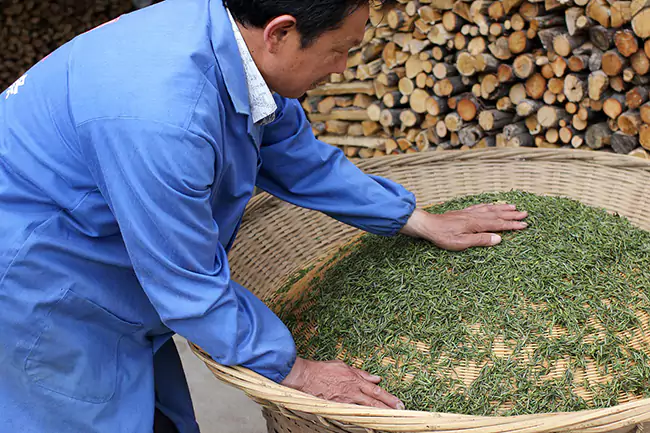
Making Huoshan Huangya Tea UsingTraditional Methods
Secondary Drying and Spreading:
The tea leaves, having undergone initial drying and spreading, are roasted again to further evaporate moisture. The roasting temperature is adjusted based on the degree of yellowing. For minimal yellowing, a lower temperature is preferred, but for moderate yellowing, a higher temperature is used. Generally, the temperature is controlled at 85-90°C until the leaves are about 70-80% dry. Afterward, the leaves are allowed to rest for another 1-2 days, promoting further yellowing.
Thorough Roasting:
In the thorough roasting process, the temperature ranges from 100-120°C, enhancing the tea's fragrance. Due to the higher temperature, the leaves are turned regularly, and this process requires attention to ensure even roasting. The tea is roasted until the leaves can be crumbled into powder by hand and contain less than 6% moisture. It is then sealed while still warm.
Growing Environment
The region where Huo Shan Huang Ya tea is produced is located at the northern foothills of the Dabie Mountains in the deep mountainous area of southwestern Huo Shan County, often referred to as the "mountains within the mountains." The area is characterized by high mountains, dense forests, layered hills, abundant springs, and long rivers, including the Taiyang River, Manshui River, and Shiyang River, as well as two reservoirs, Foziling Reservoir and Mozi Tan Reservoir. The region experiences an average annual temperature of 15°C and an annual average rainfall of 1400 millimeters, providing an ideal climate for high-quality tea trees to thrive.
Sidenote: Huoshan County is located in Lu'an City, Anhui Province. Huoshan Huang Da Cha from Huoshan County is another famous tea that is loved by many tea enthusiasts. Lu An Gua Pian (Melon Seed) Green Tea , a specialty of Lu'an City, is also famous in China.
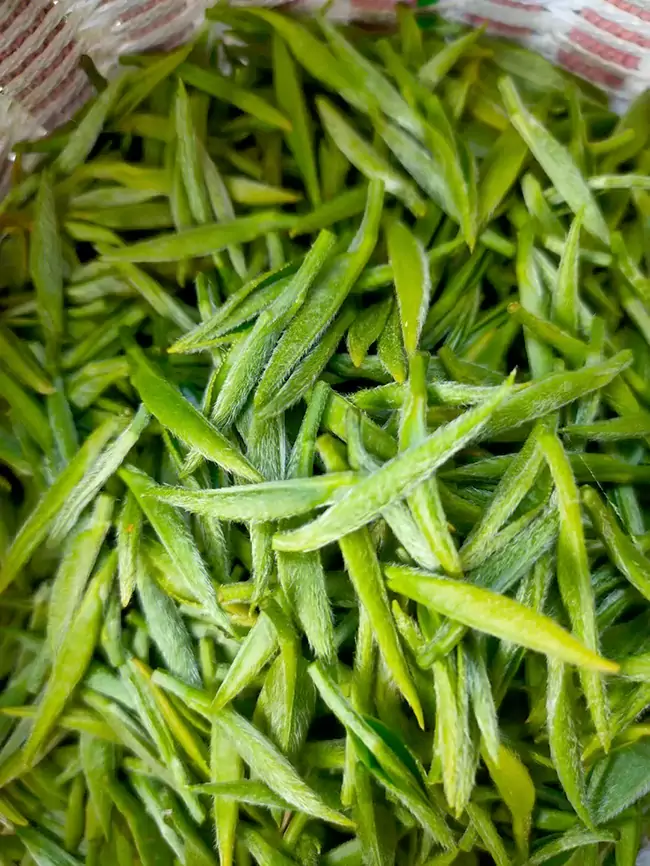
The Tender Buds Used For Making Huoshan Huangya Tea
The Huo Shan Mountain range in the western part of Anhui, adjacent to the Dabie Mountains on the border of Henan, Hubei, and Anhui provinces, has its main peak, Baima Peak, standing at an altitude of 1774 meters.
Huo Shan County, situated at approximately 31 degrees north latitude, features rugged terrain with significant temperature variations between day and night, abundant precipitation, and loose, fertile soil. This unique natural environment provides an excellent foundation for the growth of Huo Shan Huang Ya tea and contributes to its exceptional quality.
The Huo Shan Mountain range in the western part of Anhui, adjacent to the Dabie Mountains on the border of Henan, Hubei, and Anhui provinces, has its main peak, Baima Peak, standing at an altitude of 1774 meters. The county is aptly named "Mountain of Huo Shan," as it is traversed by the southwest-to-northeast Dabie Mountains and Huo Shan Mountain range, which dramatically change direction from the southwest to the northeast, forming the "Huo Shan Arc." The primary area of Huo Shan Huang Ya production lies upstream of the Dongpi River within the "Huo Shan Arc."
Characteristics
Huo Shan Huang Ya tea is characterized by its fine and tender buds with abundant downy hairs, resembling the appearance of sparrow's tongue, and displaying a yellow-green color. After multiple infusions, the aroma continuously evolves. The tea liquor has a lasting and clear fragrance, with a rich, mellow, and sweet taste that lingers, resulting in a yellow-green, clear, and bright liquid. The tea leaves are tender, bright yellow, and vibrant. With its mellow taste and lingering sweetness, it's especially known for its distinctive orchid-like fragrance among tea trees grown in the mountainous regions.
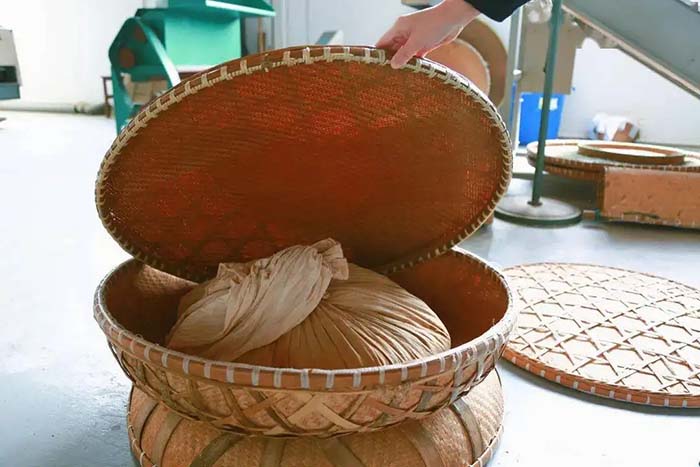
Is Huo Shan Huang Ya tea considered green tea or yellow tea?
People often wonder whether Huo Shan Huang Ya tea should be categorized as green tea or yellow tea. Strictly speaking, Huo Shan Huang Ya tea possesses a unique character, as it incorporates the traditional "menhuang (闷黄)" (sealing yellowing) technique from yellow tea in its production. However, the degree of "menhuang" is relatively low, at only 5%. Therefore, it is generally regarded in the industry as leaning more toward the characteristics of green tea. After all, it is crafted from the freshest spring buds, with each bud-and-leaf set displaying a fresh and tender appearance.
Huo Shan Huang Ya tea, a rare gem among Chinese teas, hails from the deep mountains of Huo Shan County in Anhui
Province. Its history is steeped in tradition, dating back to the Han Dynasty, and it was cherished as a tribute tea
from the Tang to the Qing Dynasty. This exquisite tea is renowned for its unique qualities, combining a rich aroma
reminiscent of flowers, fruits, and pine with a mild, mellow taste. The tea leaves are fine, tender, and downy,
presenting a vibrant yellow-green appearance. Though it incorporates the traditional "menhuang" technique from
yellow tea, Huo Shan Huang Ya is often considered closer to green tea due to its lighter degree of yellowing. The
region's mountainous environment, abundant springs, and ideal climate contribute to the exceptional quality of this
tea, making it a true treasure in the world of tea.
| Chinese Gongfu Method | |
| Tea | 4g |
| Water | Gaiwan 3oz / 90ml |
| Time | 4 infusions (15s,35s,1m10s,2m10s) |
| Temperature | 80°c / 176℉ |
| Teapot Method | |
| Tea | 8g |
| Water | Teapot (8oz / 240ml) |
| Time | 1- 4mins |
| Temperature | 80°c / 176℉ |


